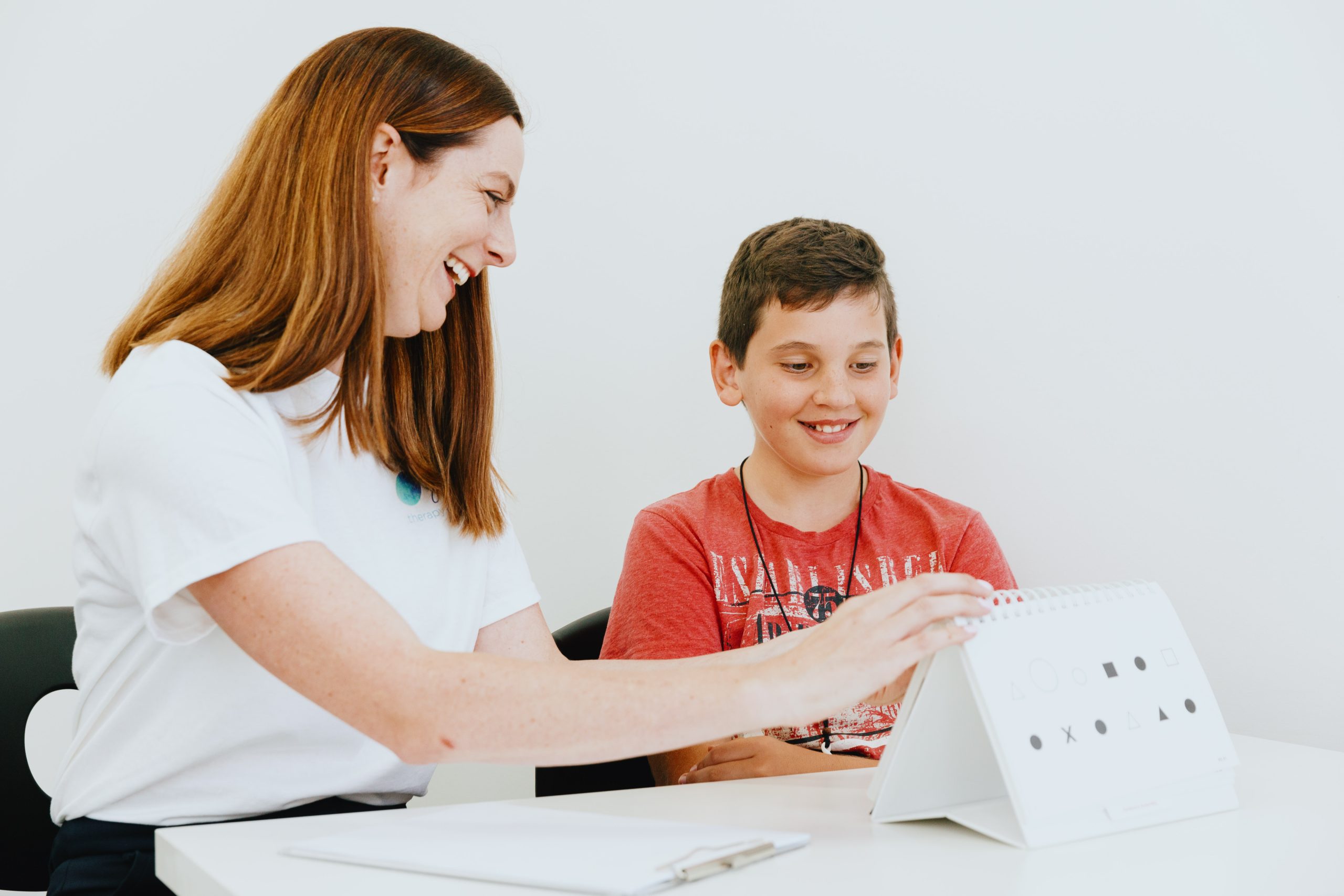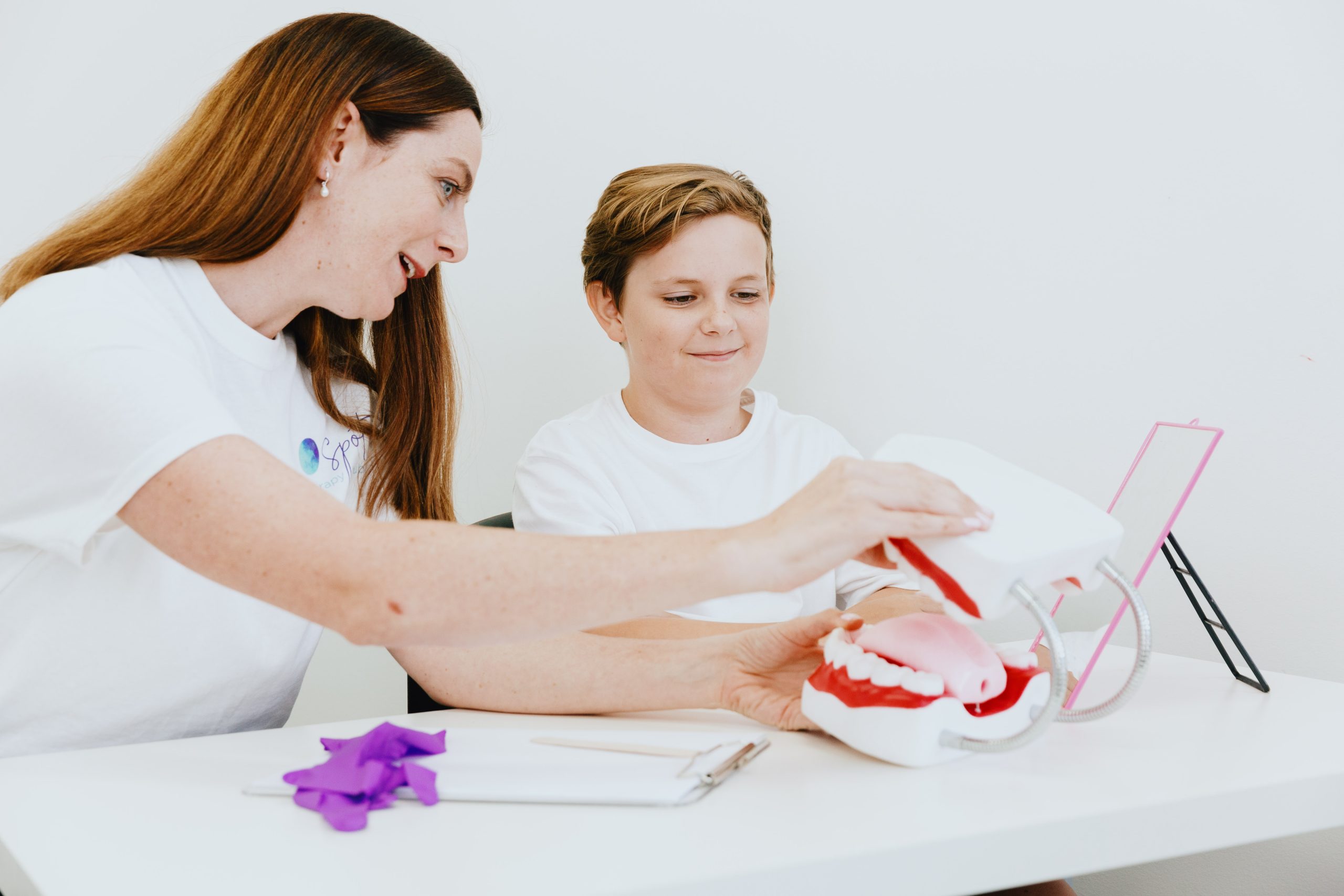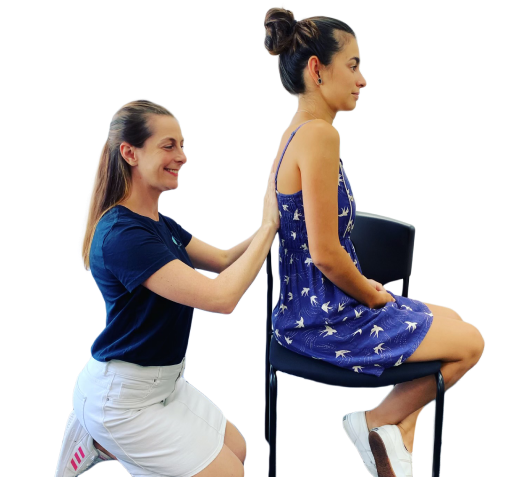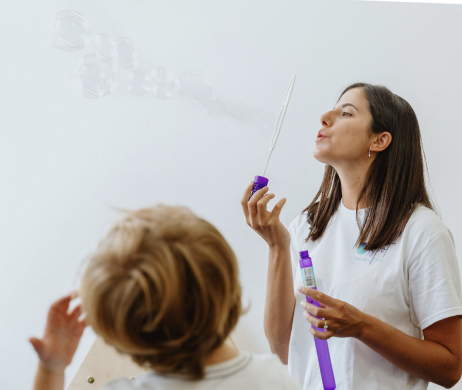


Orofacial Myofunctional Therapy (OMT) is all about the muscles in the head and neck. Speech Pathologists apply OMT to a range of their clients including speech and swallowing. But most importantly, speechies assess and treat clients using the OMT lens to support their clients’ breathing.
One of the main goals in OMT is to achieve optimal resting posture. This is to have closed lips, tongue resting on the palate (on the special spot right behind the top front teeth) and nasal breathing.
While these may seem humble goals and things we do subconsciously, many children who seek Speech Pathology and Occupational Therapy intervention present with open mouth postures and breathe through their mouth. This is significant, because we obviously can’t work on lip closure if you can’t breathe through your nose!
Mouth breathing is also significant because it is in fact, over breathing. This is an extensive subject that can’t be covered in one blog post but here are some key messages.
Breathing through our nose is important because the air is filtered and warmed, and the volume of air that is both inhaled and exhaled, supports optimal biochemistry. When we mouth breathe, we exhale too much CO2. Contrary to what most people understand about CO2 being a waste product to be expelled, exhaling too much does harm!
CO2 helps oxygen to hop off our red blood cells and enter the tissues to give us energy. Low CO2 means low oxygenation – even when we are breathing a lot. This can be seen in children with big dark bags under their eyes due to low levels of oxygenation. Big breaths do not mean more oxygen. Big breaths are inefficient and are effectively hyperventilation. Not in an acute sense, but at low and chronic levels. It is often overlooked when there are other physical, mental health or learning issues. Low CO2 levels trigger our sympathetic nervous system, meaning we are in fight or flight all the time. This affects energy levels, digestion, sleep, executive functioning (including working memory and attention), emotional regulation, anxiety and low mood including depression.



At Spot Therapy Hub, if we treat children or adults, for any goal, without considering the impact of their dysfunctional breathing, we firmly believe we are doing them a disservice.
OMT and breathing re-training may not be something a family had considered prior to accessing therapy at Spot for gross motor skills, dressing, handwriting, emotional regulation strategies, speech and language therapy, stuttering etc., as breathing may seem distant to all these goals. But the connection between breathing and these goals are so essential it would be ignorant to not address it.
It can be overwhelming to take in at first and it does require commitment because management is often multidisciplinary. This means that we have to work together with other airway specialists – ENTs, airway-oriented dentists and sleep specialists to get to the bottom of the issues.
But trust us, it is worth it.